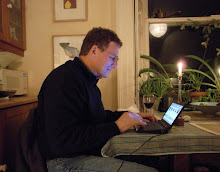
It is the method of this blog to be brief and to pair thoughts with images. I have seldom been able to write about what I know best, public education, under these self imposed strictures. But I can not ignore what is happening in my former school district, Los Angeles Unified, where thousands of teachers have been laid off and the school year has been shortened.
I retired seven weeks ago, in part, to open a slot for a younger teacher. In my role as a mentor, I saw many of my charges continue to teach conscientiously while awaiting pink slips. But my frustration over their plight is exceeded by the abysmal stewardship of officials and administrators.
For my tenth grade classes, six of my last eight weeks at Huntington Park High School were consumed by preparation and administration of three sets of standardized exams. When students return to school in May, they will have two more batteries of exams with three fewer school days in which to complete them. (It is a multi-track school with an arcane schedule). Reading long-form fiction, or working on thematic units, is no longer possible.
Most standardized tests are expensive because they are printed and graded by publishers. Furthermore, most exams have no educational value because students do not get to see which questions they missed. Finally, the data generated is unreliable as many students burn out in the testing hall and stop making an effort. The responses on bubble sheets often display happy faces or graffiti tags.
I suggest that money for standardized exams would be better spent to retain young teachers, and the time wasted on taking them could instead help mitigate the damage from forced furlough days.
In brief, as teachers often say, weighing the calves doesn't make them any fatter.
Golden Calf, by Damien Hirst, the world's richest artist. The sculpture is the carcass of a calf, festooned with gold, and preserved in formaldehyde. The artist auctioned off this symbol of our contemporary worship of lucre for over twelve million dollars. He bypasses galleries in order to cut out the middleman. Click on the picture for a closer look.





